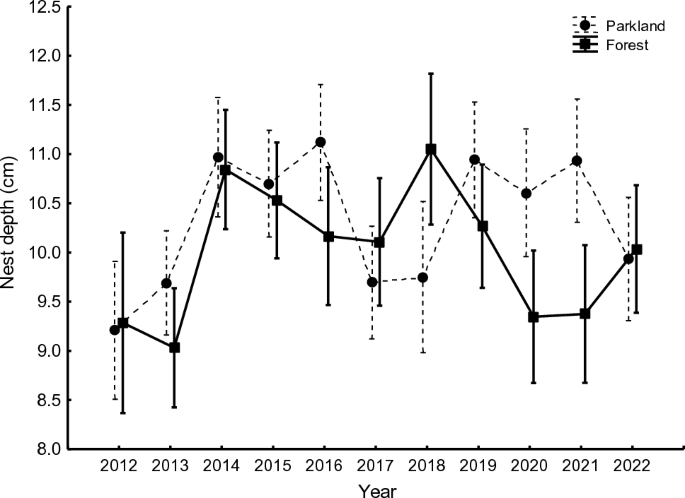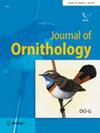Nest size parameters of Great Tits and Blue Tits: a long-term study
IF 1.3
4区 生物学
Q2 Agricultural and Biological Sciences
引用次数: 0
Abstract
Abstract Nest construction behaviour is widespread among bird species. Causes for the occurrence and great variation in nest characteristics between and within populations are still poorly understood. In this study, we present results concerning nest parameters of Great Tits Parus major and Blue Tits Cyanistes caeruleus over a period of 11 breeding seasons (2012–2022) in two structurally and floristically contrasting study areas in central Poland. The nest depth differed significantly between young (yearlings) and older females (≥ 2 years after hatching) in Blue Tits (but not in Great Tits): younger females tended to build deeper nests. The size and mass of the nest were very variable in both tit species. Blue Tits tended to build deeper and heavier nests than Great Tits. The depth of the nest was positively correlated with nest mass in Great and Blue Tits. In Great Tits, the nest mass (but not nest depth) differed between study sites, with nests being heavier in the forest and the nest depth differed between years; in Blue Tits, there was an interaction between year and study site that affected nest depth. The nest mass (but not depth) from the same nestbox tended to be consistently similar within species in Great Tits and Blue Tits. We argue that the large amount of variation in nest parameters between and within populations of both tit species may be a multi-factorial result of female age, breeding area, breeding season, individual predispositions and the size of the nestbox/natural hole.

大山雀和蓝山雀巢尺寸参数的长期研究
摘要筑巢行为在鸟类中普遍存在。种群之间和种群内部巢穴特征的发生和巨大变化的原因仍然知之甚少。在这项研究中,我们展示了在波兰中部两个结构和区系对比研究区域11个繁殖季节(2012-2022)中大山雀和蓝山雀巢参数的结果。蓝山雀的巢深在雏鸟(一岁)和成年雌鸟(≥2岁)之间存在显著差异(而大山雀则没有):年轻雌鸟倾向于建更深的巢。巢的大小和质量在两种山雀中变化很大。蓝山雀倾向于建造比大山雀更深更重的巢穴。大山雀和蓝山雀的巢深与巢质量呈正相关。在大山雀中,巢的质量(而不是深度)在不同的研究地点有所不同,森林中的巢更重,巢的深度在不同的年份之间有所不同;在蓝山雀中,年份和研究地点之间存在影响巢深的相互作用。在大山雀和蓝山雀中,同一巢箱的巢质量(而不是深度)在物种内趋于一致。我们认为,两种山雀种群之间和种群内部的巢参数差异很大,可能是雌性年龄、繁殖面积、繁殖季节、个体倾向和巢箱/自然孔大小等多因素的结果。
本文章由计算机程序翻译,如有差异,请以英文原文为准。
求助全文
约1分钟内获得全文
求助全文
来源期刊

Journal of Ornithology
生物-鸟类学
自引率
7.70%
发文量
0
审稿时长
3-8 weeks
期刊介绍:
The Journal of Ornithology (formerly Journal für Ornithologie) is the official journal of the German Ornithologists'' Society (http://www.do-g.de/ ) and has been the Society´s periodical since 1853, making it the oldest still existing ornithological journal worldwide.
 求助内容:
求助内容: 应助结果提醒方式:
应助结果提醒方式:


